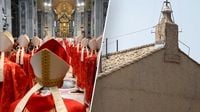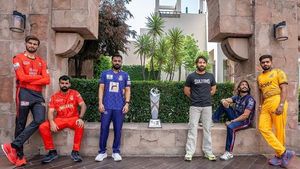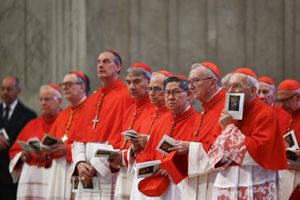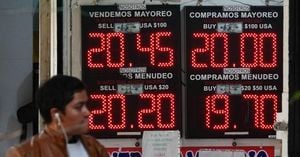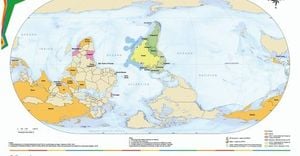As the sun sets over Vatican City, all eyes are on the Sistine Chapel where the conclave has officially commenced today, May 7, 2025. A total of 133 cardinals from around the globe have gathered to select the 267th Pope of the Roman Catholic Church, following the passing of Pope Francis on April 21. The anticipation is palpable as spectators await the first smoke signal from the chapel, expected shortly after 7:00 PM, which will indicate whether a new Pope has been elected.
The conclave, a sacred and often tense process, is steeped in tradition. The cardinals will participate in a series of voting rounds, with the crucial requirement that at least two-thirds of them, or 89 votes, must agree on a candidate for white smoke to emerge from the chimney, signaling a successful election. If no consensus is reached after three days, the cardinals will observe a day of rest for prayer, a practice that underscores the solemnity of their task.
This morning, the cardinals attended the Missa pro eligendo Romano Pontifice in St. Peter's Basilica, a special mass designed to invoke divine guidance in their deliberations. Cardinal Francesco Montenegro, who cannot participate in the voting due to age, urged his fellow cardinals to set aside personal considerations and focus on the "well-being of the Church and humanity." This call to unity reflects the essential spirit of the conclave, as the church seeks a leader capable of addressing contemporary challenges.
Among the 133 participating cardinals is Wim Eijk, the Archbishop of Utrecht and the only cardinal from the Netherlands. Eijk, who has a background in medicine and philosophy, has been a controversial figure due to his conservative views on various social issues, including homosexuality and premarital sex. Appointed as a bishop in Groningen in 1999 and later as Archbishop of Utrecht by Pope Benedict XVI in 2007, Eijk's candidacy has sparked interest not only in the Netherlands but internationally as well.
Despite being mentioned as a candidate, Eijk is not considered a frontrunner in the race for the papacy. According to bookmakers, his odds of becoming Pope are quite low, with odds of around eighty times the stake if he were to win. Other candidates, including Mario Grech from Malta, Cristóbal López Romero from Spain, and Pietro Parolin from Italy, are seen as more likely to succeed. However, history has shown that the conclave can yield unexpected outcomes; in 2013, Jorge Mario Bergoglio, now Pope Francis, emerged as a surprise choice.
The voting process is methodical, with four rounds each day—two in the morning and two in the afternoon. If a candidate receives the required two-thirds majority, they will be asked to accept the papacy. Should the voting yield no results, the cardinals will continue to meet daily until a new leader is chosen. The smoke from the chapel's chimney, a symbol of the conclave's progress, will be closely monitored by the faithful gathered outside, eagerly awaiting news of their new spiritual leader.
Historically, the conclave has varied in duration and complexity. For instance, the last conclave in 2013 took just two days and five voting rounds to elect Pope Francis. In contrast, the election of Pope John Paul II in 1978 lasted three days and required eight rounds of voting. Each election reflects the unique circumstances and challenges of the times, and this conclave is no different.
As the cardinals prepare for their first rounds of voting, the stakes are high. They must navigate not only the internal dynamics of the Church but also the expectations of millions of Catholics worldwide. The new Pope will face pressing issues such as the Church's stance on LGBTQ+ rights, the role of women in the Church, and the ongoing challenge of maintaining relevance in a rapidly changing world.
In addition to Eijk, other candidates are also under scrutiny. Cardinal Luis Antonio Gokim Tagle from the Philippines and Cardinal Robert Prevost from the United States have been highlighted as potential favorites, given their progressive views that align more closely with those of Pope Francis. This reflects a broader trend within the Church, as many cardinals are advocating for a more inclusive and modern approach to leadership.
As the conclave unfolds, the world watches closely. The outcome will not only determine the future of the Catholic Church but also signal how it intends to engage with contemporary society. The anticipation surrounding the election is not just about who will wear the papal tiara, but also about the vision they will bring to a Church at a crossroads.
In the coming hours, the cardinals will cast their votes, and the process of deliberation will begin. With each round of voting, the tension will build, leading up to the moment when the smoke signals the choice of a new Pope. Will it be black smoke, indicating continued deliberation, or white smoke, heralding the arrival of a new leader? Only time will tell, but for now, the faithful and the curious alike remain hopeful and watchful.
